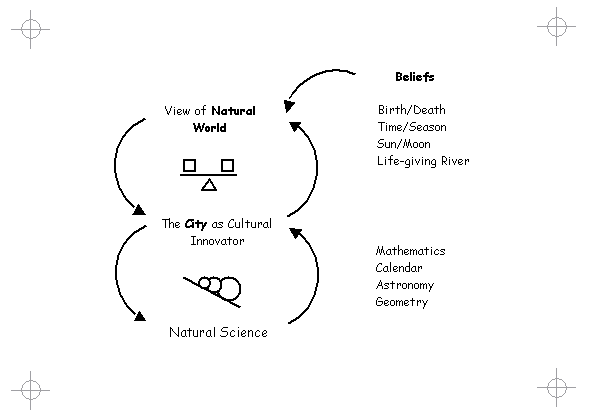|
Two Converging Worlds
|
|
Like many other stories, the story of architecture begins with the earliest accounts we have of man. Both the Bible book of Genesis and Darwin's Theory of Evolution provides a story of man's struggle for survival in his natural environment. The building of dwelling places was a functional necessity, which developed into
"a creative partnership with the natural world, through which people develop their intellect and skill."
[Risebero, 1997]
|
|
While the profession and role of the Architect as a designer was established much later in history, man's early creative designs resulted in the development of natural architecture. Aesthetic values were developed based on nature and the surrounding environment. Beliefs also played a significant role. One can imagine the sense of free-flowing natural curves and spiritual forms that influenced the creative thinking in these early craftsmen and designers. Unlike our modern geometric views, there were no straight lines, no spatial constraints. Beauty was judged based on an interpretation of the contours and patterns of nature and was not associated with symmetry, geometric shapes, grids and perspectives.
|
|
In his book, "The Story of Western Architecture", Bill Risebero relates how the Urban Revolution changed all this and was a turning point in history, which resulted in the development of two converging worlds. Cities were cultural innovators that provided growth in natural sciences. Using Peter Senge's "Limits to Growth" systems archetype [Senge, 1990, p.379], the story of the two converging worlds can be illustrated through the conceptual model below.
|

|
|
One world represents the view of the natural world with its belief systems. Animistic religion played a significant role in rituals and beliefs relating to birth and death, time and season, sun and moon, and the life-giving river. The other world view represented developments in the natural sciences. Cities around the world were accelerating the pace of development in natural sciences including mathematics, the calendar, astronomy and geometry [Risebero, 1997, p.10].
|
|
Note that the belief systems provided a limit to growth, a form of balancing in the view of the natural world that opposed the escalating cycle of development in the sciences. As the view of the natural world converged with the view of natural sciences, the latter escalated in its progress. This progress would lead to classical, modernist and postmodernist architecture. Natural architecture would continue in various forms through cultures whose beliefs and aesthetics placed value on oneness with the natural world around them. The fact that architecture could be influenced in this way - through abstract ideas and beliefs - illustrates the point that architecture has more than one layer of thinking and abstraction.
|
|
|
